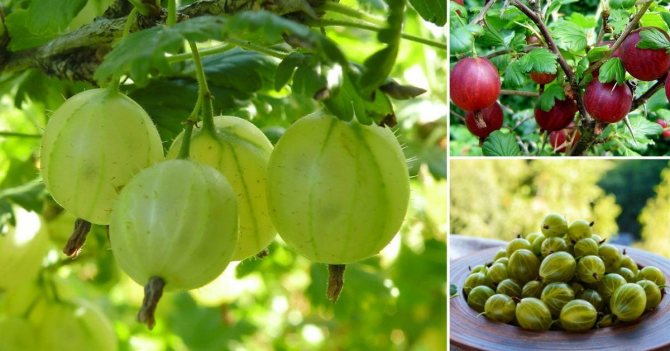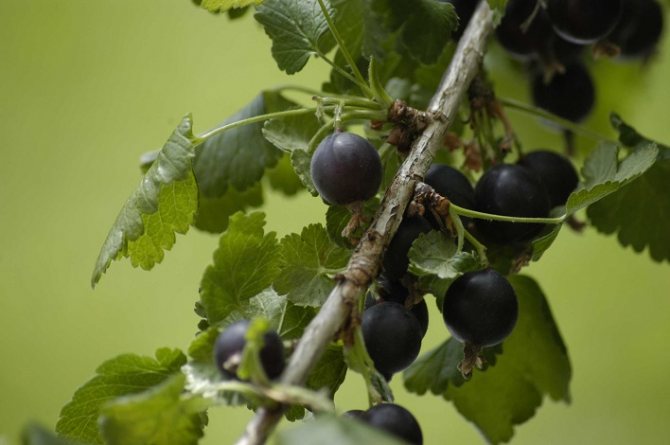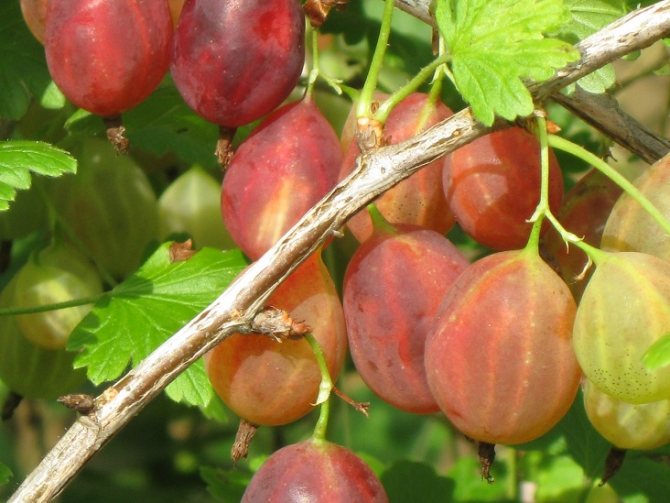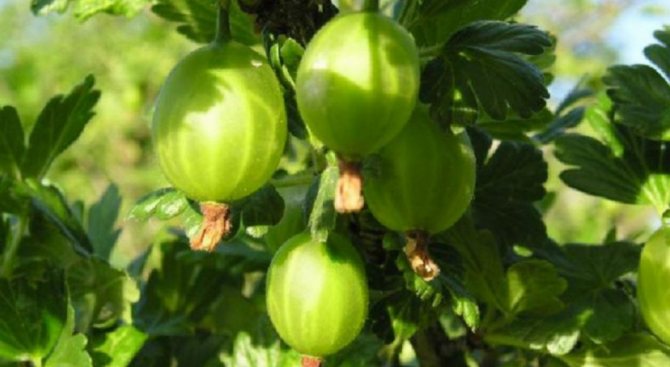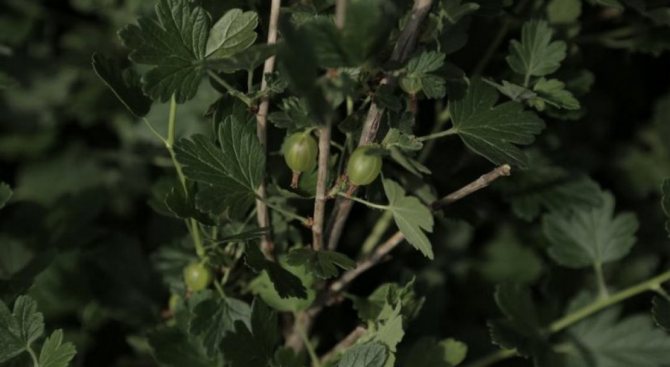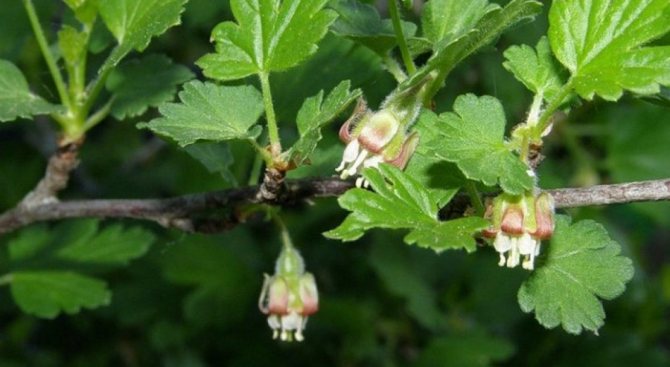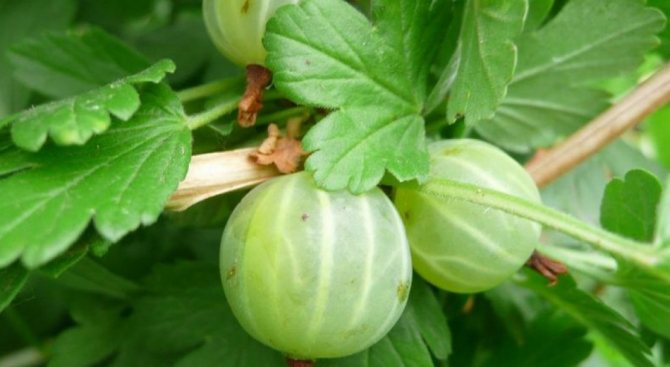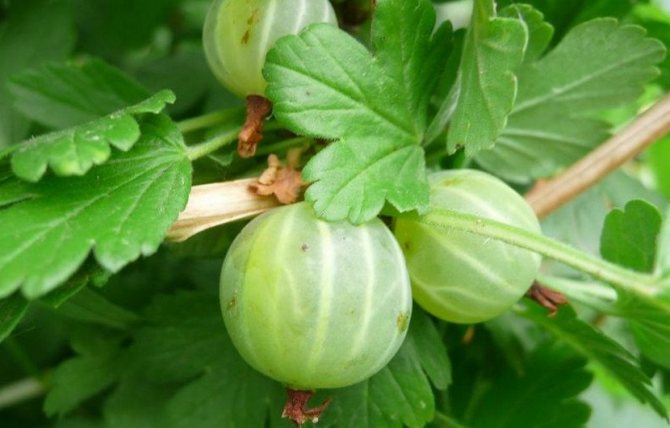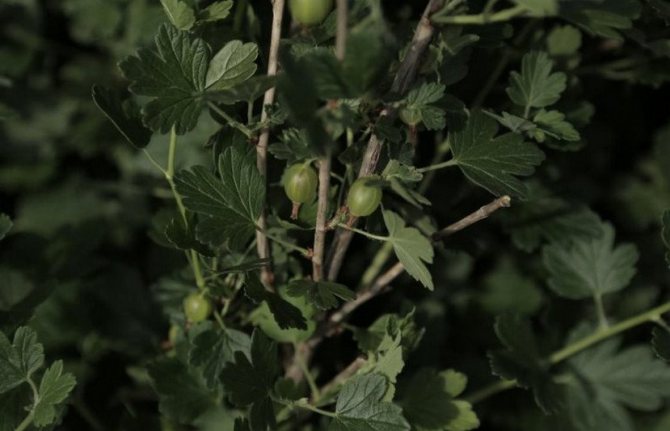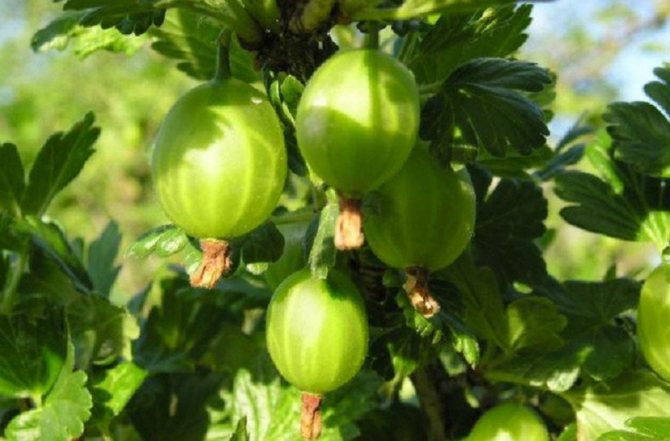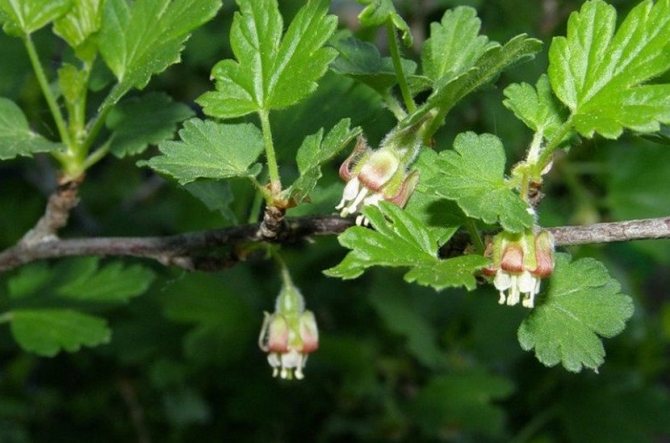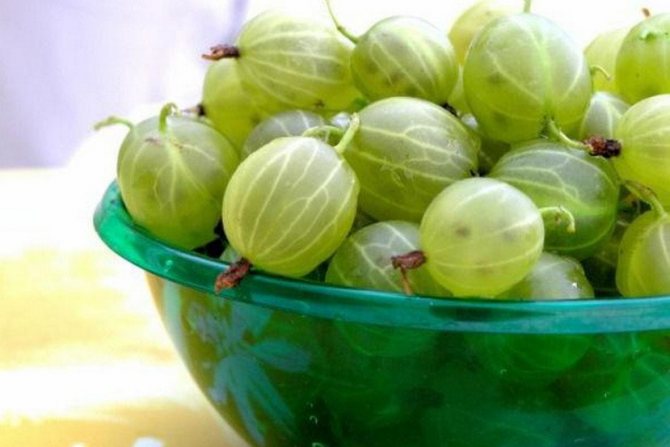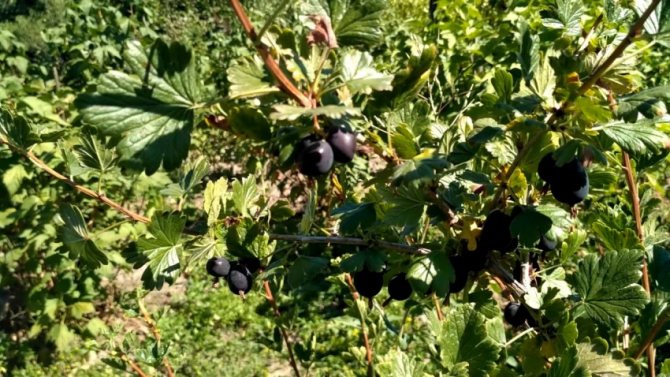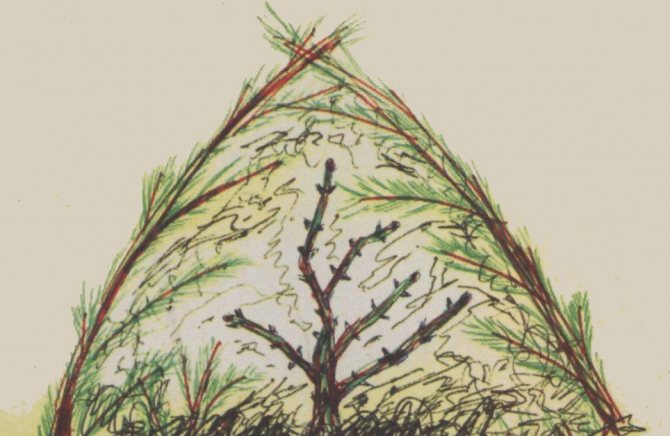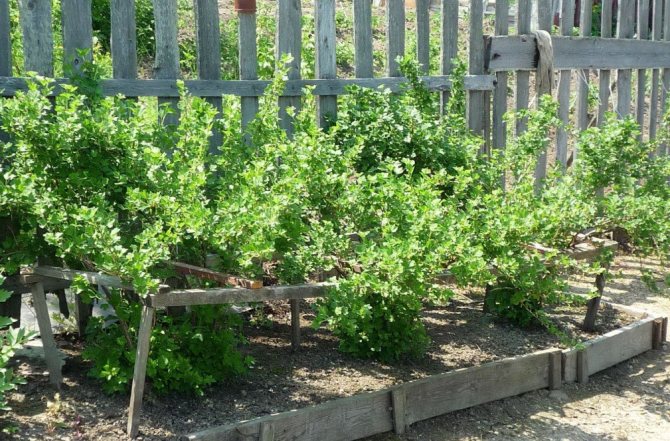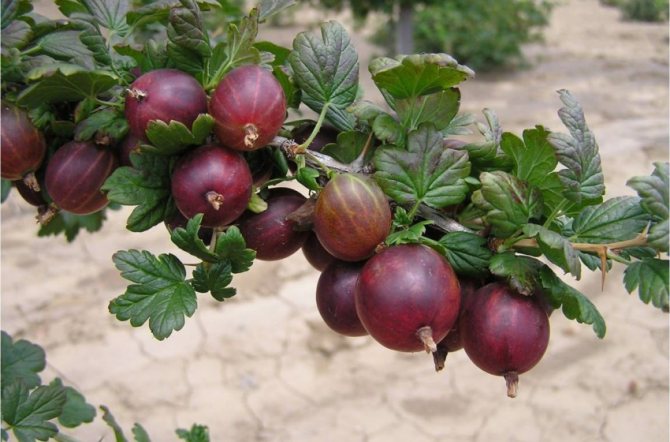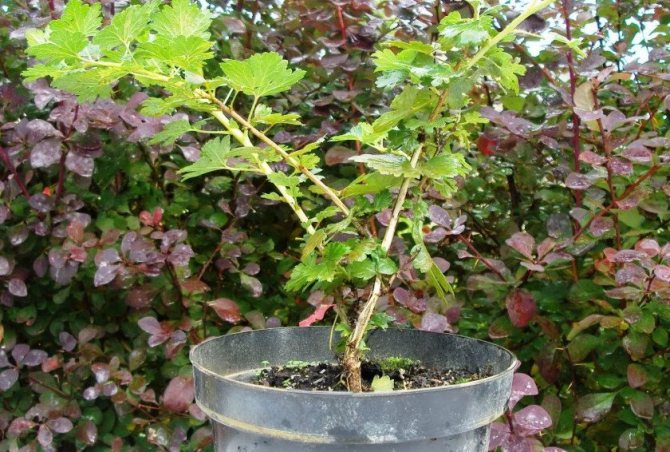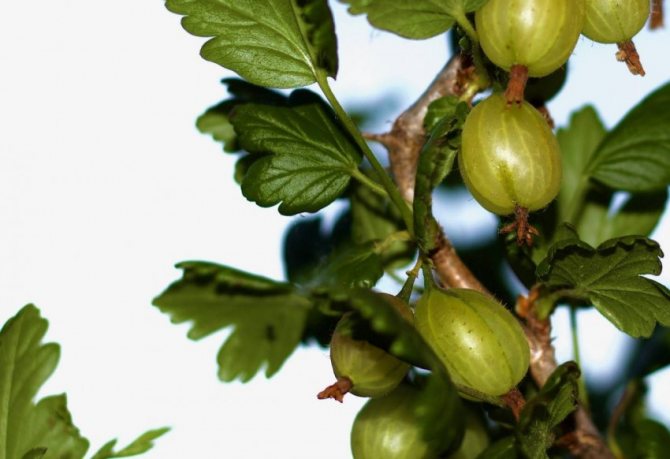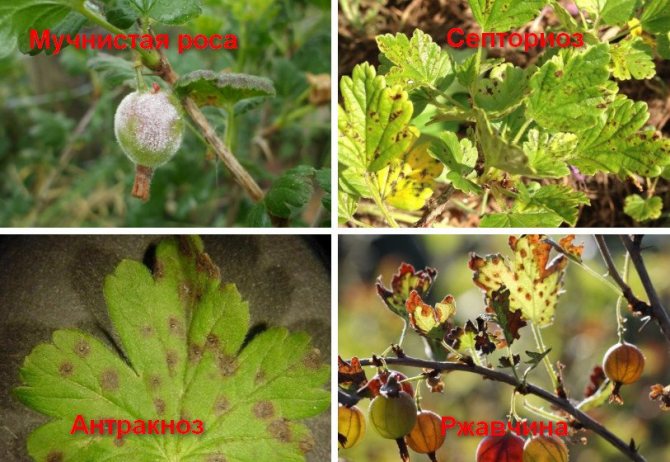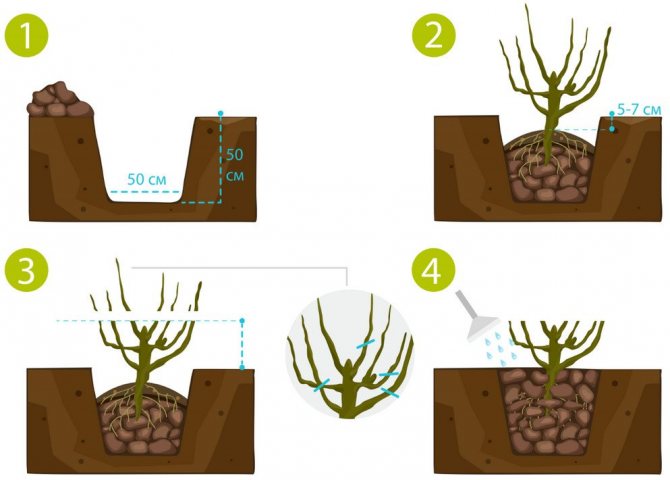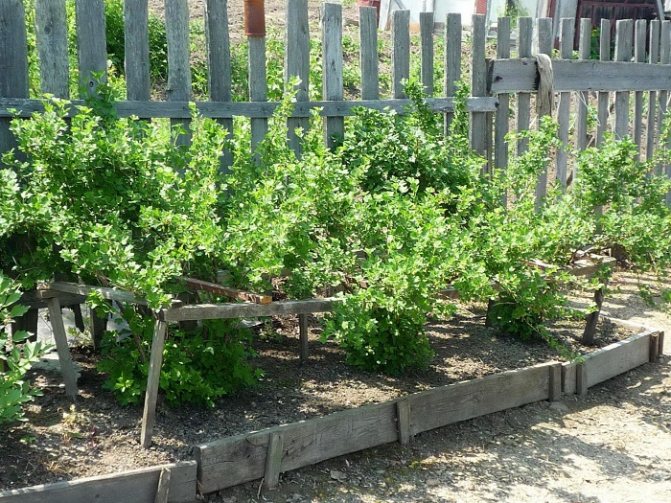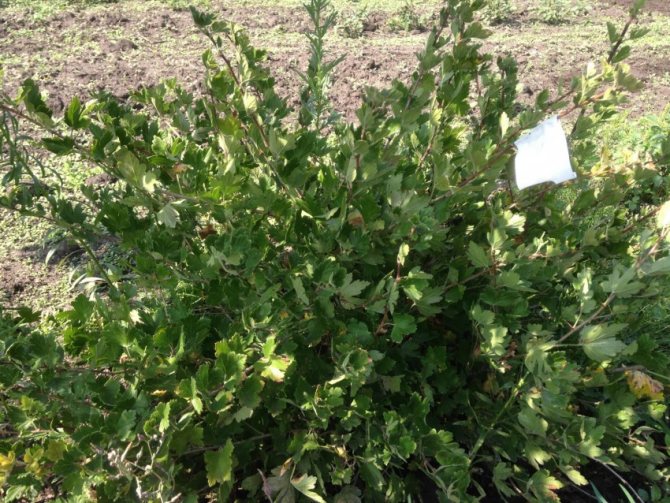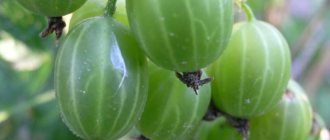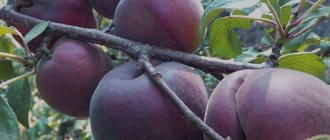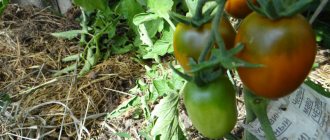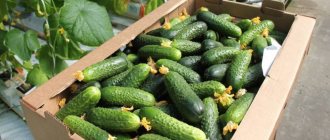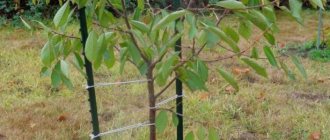Gooseberries take pride of place among fruit and berry lovers. Gooseberries have healthy and tasty berries, but picking them is a problem, since the branches of the bush are equipped with sharp thorns. Gooseberry varieties without thorns or with a small number of them on the branches were bred just for this purpose - to protect the clothes and hands of the gardener during the harvest.
The taste qualities of the berries of the thornless gooseberry varieties do not differ at all from their thorny counterparts. There is not much difference in the period of fruiting, yield and frost resistance. Some varieties of thornless gooseberries have a certain resistance to fungal attack. However, there are no completely thornless gooseberry varieties. The number and softness of thorns depend on weather conditions and agronomic characteristics. On young branches of thornless varieties, thorns are absent, but on old branches there may be, but in small quantities.
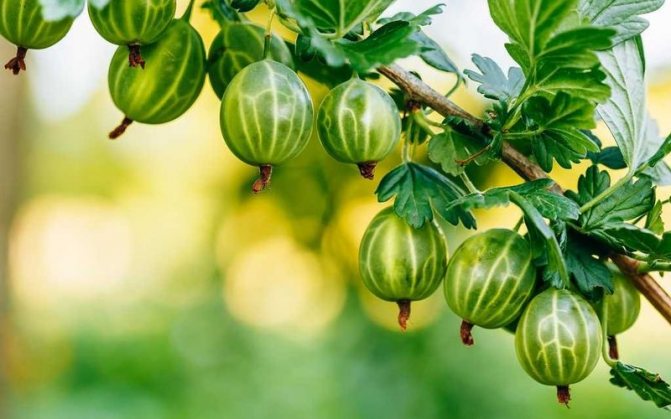
What does the gooseberry look like?
Breeding history
For its excellent taste, gooseberries are sometimes called grapes from the North. The fruits of the plant are rich in vitamins and minerals, as well as pectin. The maximum yield per bush can reach 15 kg. But thorns during harvest and powdery mildew are a real problem for gardeners. Breeders set to work using North American gooseberry varieties, and obtained varieties devoid of thorns and practically not exposed to such a scourge as powdery mildew.
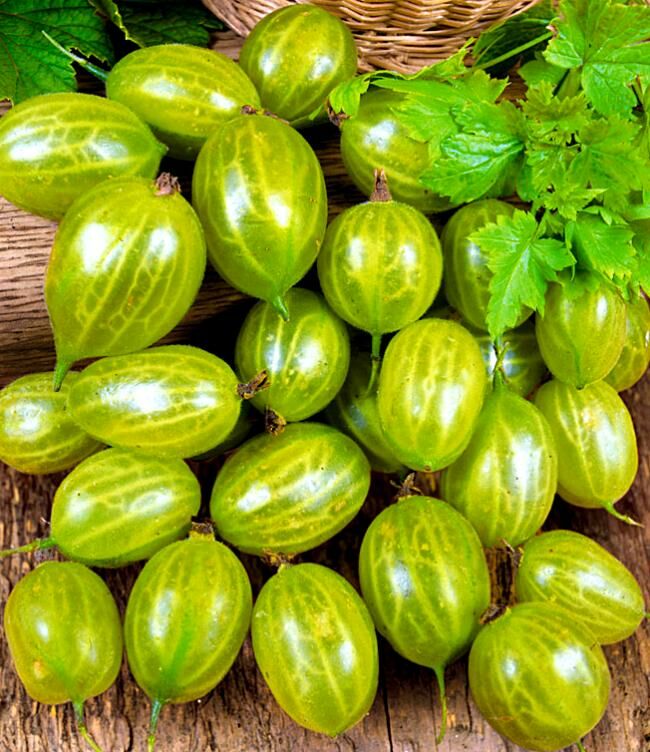

Every gardener dreams of harvesting a rich harvest from the bushes.
For your information! In Russia, the first registered varieties of the thornless gooseberry are Orlyonok, Kolobok and weakly thorny. In the Urals, due to insufficient resistance to frost and temperature extremes, regionalization was poor.
Characteristics and descriptions of the best representatives of the species
Thornless gooseberries are a tasty and healthy berry. All modern bred varieties of this plant without thorns have a number of their own characteristic features. The main ones are:
- black-fruited;
- red-fruited;
- green.
Black-fruited
Violet Ek - description, varieties and characteristics of varieties
These varieties got their name from the color of the berries. Grushenka is a striking representative of the black-fruited variety of the thornless gooseberry. The berries of the plant are large, pear-shaped. The color is black and purple, and the pulp is sweet and sour. Ripe fruits have a pronounced aroma.
Note! The Grushenka variety is resistant to diseases such as powdery mildew, anthracnose and septoria.
The second representative of black-fruited thornless varieties is Eaglet. Ripe fruits are black, their shape is round. There is a resemblance to black currant. Taste qualities are excellent, sweet and sour aftertaste is expressed. The variety is resistant to frost and powdery mildew.
The bush itself is tall, has a small number of thorns in the lower part. Leaves are rich green.
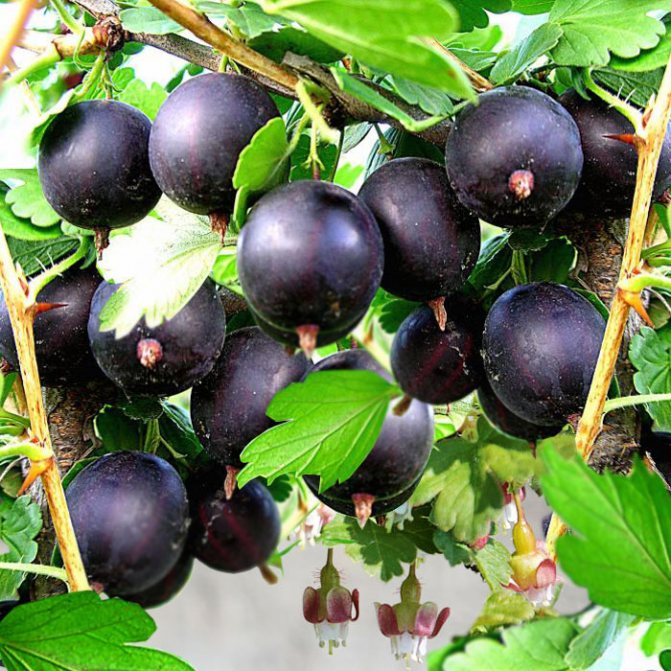

Eaglet
Another representative of black-fruited varieties is the Northern Captain. Suitable for making homemade drinks, including alcoholic ones. The value of this type of thornless gooseberry is good winter hardiness.
Red-fruited
The representative of the red-fruited varieties devoid of thorns is Kolobok.Obtained as a result of crossing a pink variety and Smena. Differs in rapid maturation. Does not tolerate sudden temperature changes.
For your information! In regions with regular temperature drops and severe winters, the Kolobok variety freezes.
Fruits are round, dark red in color. The bush requires regular pruning, as it is quite tall.
High red-fruited gooseberry variety without thorns Consul. Possesses good productivity. The fruit tastes sour with a slight sweetness. It is resistant to powdery mildew and septoria.
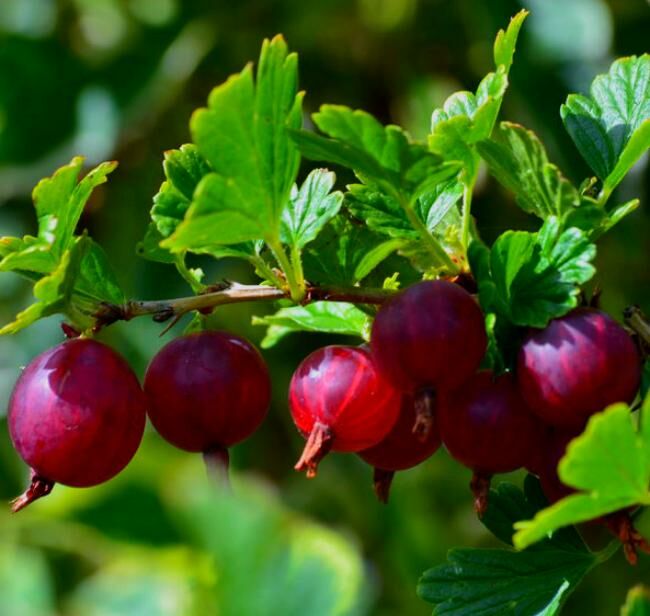

Red-fruited thornless view
Red thornless gooseberry is a Sirius variety with excellent yield and frost resistance. It also resists powdery mildew well. Berries of the Sirius variety are small, rounded and bright red in color. The pulp is tender and sweetish-sour.
Green
Tall, not thorny gooseberry - Ural thornless. Has many branches intertwining with each other. The thorns on the bush are small and rare. The berries are light green and the flesh has an unusual taste. For this, the Ural Besshipny has established itself for the preparation of compotes and preserves.
Note! Among the thornless varieties with green fruits are the Emerald and Malachite varieties.
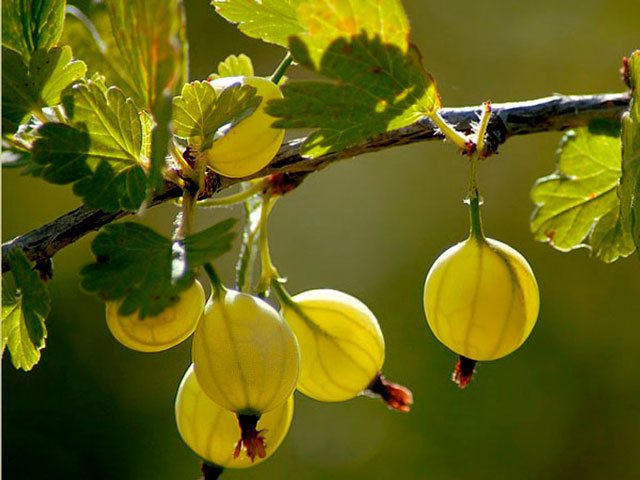

Malachite
The sweetest
The sweetest varieties are Uralsky Besshipny and Kolobok. There are few thorns on these bushes, and resistance to fungal diseases is high. Both varieties are quite tall and require regular pruning. Unlike the Ural variety, Kolobok cannot boast of special resistance to temperature extremes, therefore it grows widely in the southern regions.
For your information! Gooseberries with a sweet honey flavor are yellow.
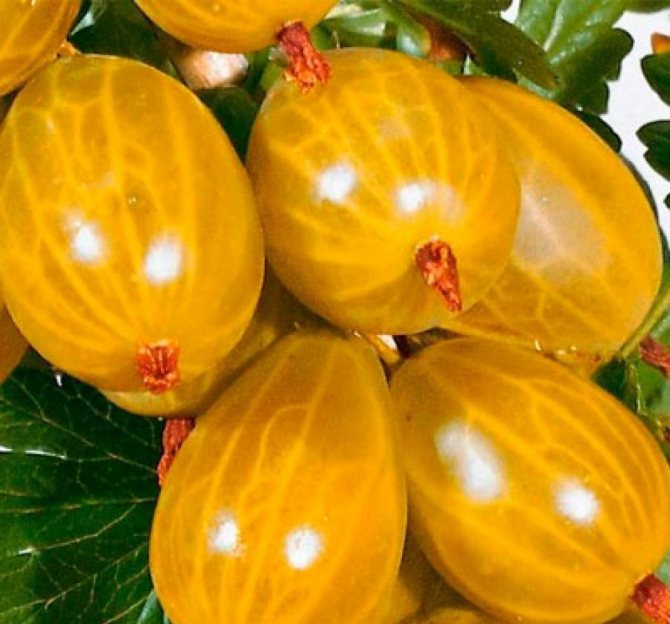

Honey varieties
The most productive
The most productive varieties of gooseberries with a small number of thorns are the Northern Captain, Sirius and Ogni Krasnodar. The North Captain variety gives a very large harvest for the entire season. It is actively grown in Russia, even in remote areas of Siberia. In addition to the above qualities, this dark berry gooseberry variety produces a large harvest. It grows well in the Moscow region and Central Russia.
The Sirius variety also gives a large yield, despite the fact that the fruits are not particularly large in size. It has a sweet and sour taste, is not afraid of frost and fungal diseases. Fruit ripening occurs in the middle of summer.
Why gooseberry thorns
Indeed, the thorns are a feature of the gooseberry bushes. They protect the branches from direct sunlight, condensation accumulates on them, so that the plant does not overheat even on a hot day. In addition, the thorns prevent the hoofed animals from reaching the sweet berries, thereby providing the plant with an increased survival rate among competitors.
But the summer cottage is a territory inviolable for elk and deer. Breeders have the opportunity to outsmart nature and create almost thornless gooseberry species.
Such crops appeared and over time received the active support of gardeners. And the classification of the plant by the presence or absence of thorns on the bush included thornless, medium thorny and strongly thorny varieties.
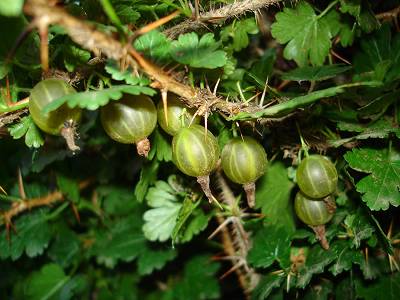

Gooseberry thorns complicate crop care - it's hard to pick berries, constantly risking pricks
General advantages and disadvantages
Garden violet - description, varieties and characteristics of varieties
Some gardeners claim that thorny gooseberry varieties yield more fruits, and they are much tastier than their thornless relatives. In fact, the flavor of any gooseberry depends on the variety. Some have a sour taste, others sweet and aromatic.
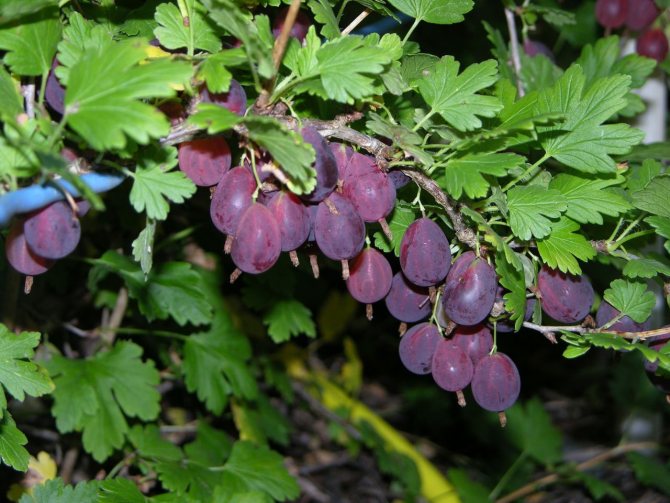

Grushenka
Drought resistance, frost resistance
In the course of breeding work, the crossing of certain varieties of thorny gooseberries gave unexpected results. In addition to resistance to powdery mildew and many other fungal diseases, thornless gooseberry varieties have good resistance to frost and temperature extremes.
Productivity and fruiting
Productivity and fruiting also depend on the variety, and not on the number of thorns on the bush. Some varieties of gooseberries without thorns (for example, Sirius, Northern Captain, Kolobok) give an excellent harvest per season.
Scope of the fruit
Gooseberries are used to make jams, preserves, compotes and even alcoholic beverages. The area of application may differ depending on the grade. So, the Orlyonok variety, belonging to the black-fruited species, is used to make homemade wine or tinctures. The Uralsky besshorny variety has green fruits and sour-sweet pulp; it is used for making compotes and jam.
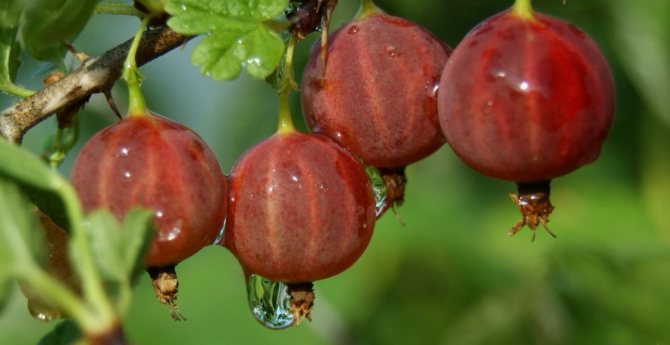

Red-fruited gooseberry thornless
Disease and pest resistance
Thanks to breeding work, thornless gooseberry varieties are practically unaffected by fungal diseases such as powdery mildew. But with improper care and adverse weather conditions, gooseberry bushes can be exposed to anthracnose, goblet rust, aphid, sawfly, gooseberry moth. It is worth remembering this and always closely monitor the condition of the bushes.
Important! It is necessary to strictly follow the planting rules, select a place, prepare planting material. In this case, the risks of diseases and pests on the bush are minimized.
Preparing for the winter period
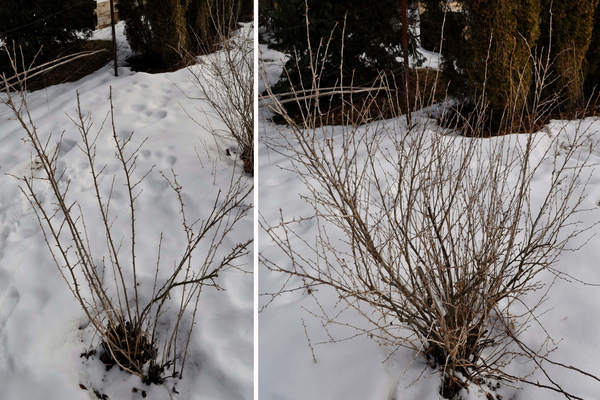

This variety is good for frost, so it does not need any protection in the form of shields or straw. Before wintering, it is necessary to carefully clean around the gooseberries, that is, weed the ground, remove old leaves. The soil must be thoroughly loosened and preventive treatment against diseases and viruses must be carried out. The trunk circle must be closed with compost.
Landing rules
Forest violet - description, varieties and characteristics of varieties
All varieties of crops are plants that do not tolerate close bedding of groundwater. On swampy soils, not a single gooseberry will grow normally. It is recommended to drain the soil well before planting.
Note! Gooseberries show the best properties when planted on loamy buds and sod-podzolic buds.
Recommended timing
It is recommended to plant thornless gooseberries in the spring or autumn. Gardeners recommend planting plants in the fall, since a small bush adapts well and hardens in winter, gradually being exposed to low temperatures. Some summer residents claim that a plant planted in the spring has the ability to grow strong roots and go into hibernation strong.
Choosing the right place
As already mentioned, gooseberries do not like soil with a high level of groundwater (waterlogged), therefore, a place for planting must be selected carefully. Lighting is an important condition for the normal development of the bush and its further successful fruiting. The gooseberry loves the sun, but the area must be protected from drafts.
Landing algorithm
To plant the selected bush, you need to prepare a hole about 30 cm deep. This must be done not before boarding, but in advance. For example, if planting is planned in the spring, the pit is prepared in the fall.
This is followed by the algorithm:
- A special mixture is placed at the bottom of the prepared pit. This nutritional composition will allow the gooseberries to take root better. The mixture contains straw manure, wood ash or potash salt and lime powder.
- Next, the plant is planted. The bush is buried so that the root collar is 6 cm below ground level. The lower branches can also be sprinkled with earth.This will allow the gooseberries to take root better.
- During planting, the seedling must be placed vertically. After that, the pit is filled up, the kidney is compacted (trampled) and watered. Mulch (peat or humus) can be used to retain additional moisture around the trunk.
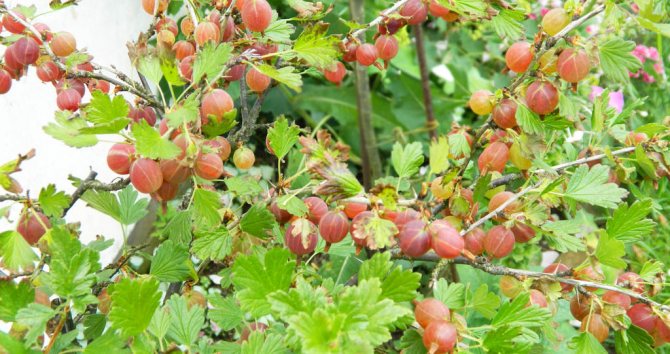

Red gooseberry harvest
How to increase soil fertility?
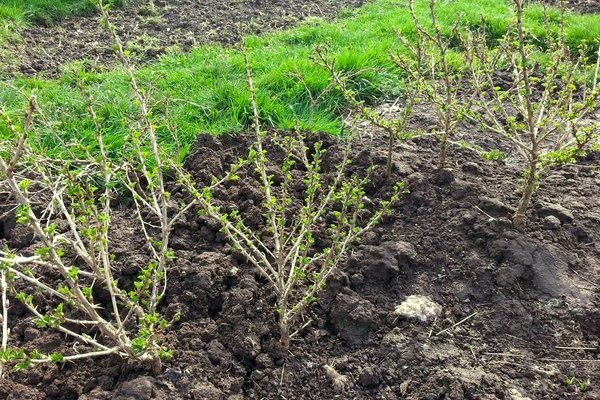

In order for the soil to provide as much nutrients as possible, it should be fertilized with a special mixture. To prepare the mixture, you will need manure (5-6 kilograms), peat (4 kilograms), limestone (120 grams), wood ash (200 grams), superphosphate (80 grams). All components must be mixed well and mixed with earth.
Since soil fertility is very important for gooseberries, feeding should be done several times per season.
- In early spring, the plant needs nitrogen, so nitrogen fertilization must be applied (15-25 grams per 1 square meter).
- In summer, gooseberries need potassium and phosphorus, so a complex feeding from these substances is perfect.
- In the fall, superphosphate should be added in an amount of 25-30 grams per bush.
Follow-up care
Gooseberry is a slow-growing plant. In volume, the bushes do not grow quickly, but in the second year they can give a relatively good harvest. To increase it, it is important to regularly water the bushes, but so that there is no excess moisture. You need to be careful about the plant during the dead period and 14 days before the start of the harvest.
Note! It is recommended to loosen the soil around the bush, but carefully. Otherwise, there is a risk of damage to the root system. Weeds need to be weeded out, as they are carriers of pests and various diseases.
Growing features
A well-chosen place, prepared soil and timely care are the key to obtaining a healthy, fruitful gooseberry bush.
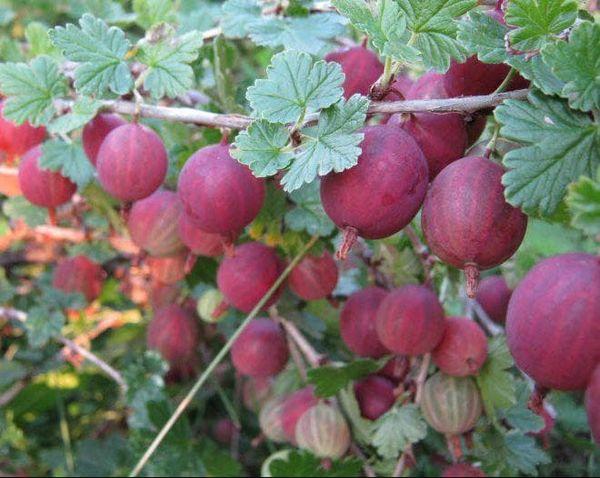

Varietal gooseberry seedlings are purchased in nurseries or garden centers.
The plant is carefully examined for damage and disease. The roots should be well moistened, free from rot and fungal infections.
Planting gooseberries
The fruit crop loves lighted areas of land with neutral acidity and moisture content, protected from wind and drafts. The permissible placement of groundwater is at least 2 m from the soil level.
See also
How to plant and grow gooseberries from seeds at home
To read
Planting work is planned for early spring or autumn.
In the southern regions, gooseberry planting is carried out in the fall, in the middle lane, planting work is recommended in the spring.
Weed removal
Preparation of the site for planting seedlings begins 4-6 weeks before the planned work with digging up the soil and removing weeds, roots and debris.


Important! Weeds are the main carriers of pests, viruses and fungi.
After weeding the site, organic and mineral fertilizers are applied to the soil.
Loosening the earth
To enrich the fertile soil with oxygen and useful substances, work is carried out to loosen the soil. The lighter the soil, the faster the seedlings will take root and take root.
Planting pit depth
After the completion of the preparatory work, planting holes are dug in the prepared area.
- Before planting in open ground, the seedlings are placed for 5-8 hours in a container with water and clay.
- The depth and width of the hole ranges from 40 to 50 cm.
- Distance between plantings 1.5 m, between rows 2 m.
- A drainage layer of river sand mixed with broken stone or crushed stone is laid at the bottom of the hole.
- A fertile soil is laid out on top with a mound and a support peg is installed.
- A seedling is placed in the center of the hole.
- The roots are evenly distributed in the hole and covered with a fertile soil mixture.
- The ground is tamped from above, the seedling is tied to a support and watered abundantly.
Important! After the completion of planting work, the trunk circle is mulched with humus or dry grass.
Care rules
Timely pruning of fruit bushes, watering and feeding will help increase the yield of berry crops.
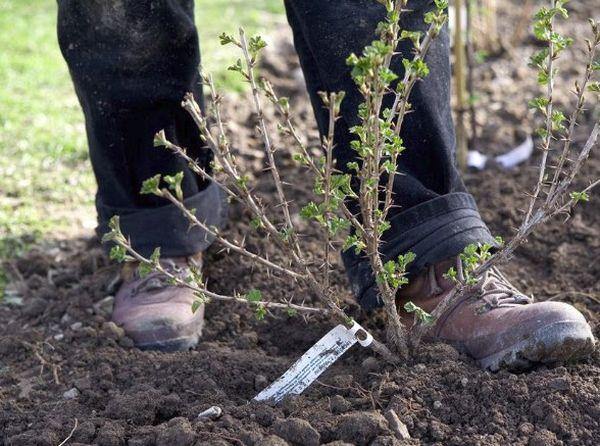

Watering
Gooseberries have a negative attitude towards excess moisture. Water the fruit crop as needed, but no more than 1-2 times a month.
During the period of flowering and the formation of ovaries, irrigation work is important for the berry shrub, but during the period of fruit ripening, watering is stopped altogether.
Pruning
The gooseberry grows and develops rapidly, so the fruit bushes need an annual formative and sanitary pruning.
It is recommended to form a bush in the spring, before the beginning of the growing season. They choose 3-4 of the strongest shoots, the rest are cut off at the root.
In autumn, dried, broken and old branches and shoots are removed from the plant.
Top dressing
If the gooseberry was planted in fertile soil, feeding begins at 2-3 years of growth of the fruit crop.
- In early spring, the bushes are fed with nitrogen-containing fertilizers for the growth of the green mass of the plant.
- During the flowering period, gooseberries need phosphorus and potassium.
- When the berries ripen in autumn, the fruit bushes are fed with organic matter.
Nitrogen fertilizers are not used during the growing season, since the gooseberry will begin to develop leaf cover to the detriment of yield.
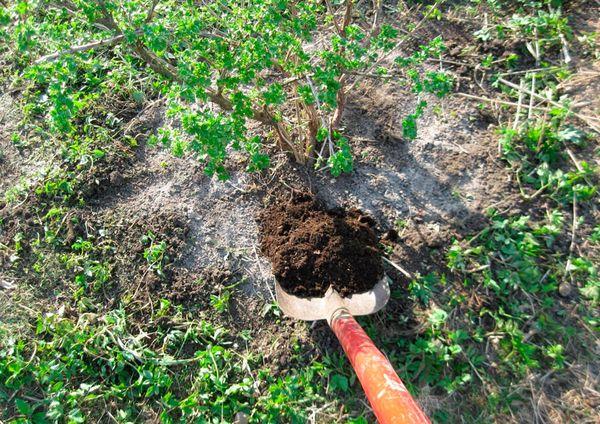

Disease and pest control
Thornless gooseberry varieties are rarely affected by fungal and viral diseases. But with unfair implementation of agrotechnical measures, the immunity of the fruit crop decreases.
In spring and autumn, it is recommended to carry out preventive spraying of bushes and soil with chemical or biological means of protection against pests and diseases.

